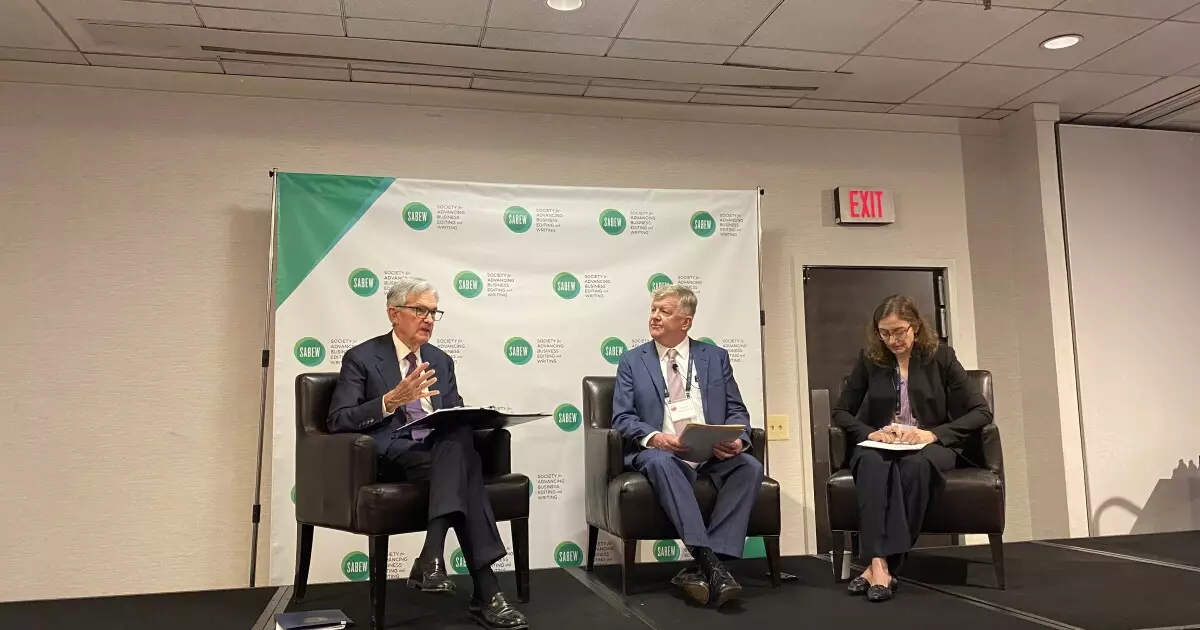As the Trump administration embarks on its ambitious agenda of implementing aggressive tariffs, altering immigration policies, and reshaping government spending, the uncertainty surrounding the U.S. economy is palpable. Federal Reserve Chair Jerome Powell’s cautious stance reflects a broader need for introspection among economists and stakeholders. Rather than hastily reacting to government policies, the Fed is taking a prudent wait-and-see approach, emphasizing that the full ramifications of these reforms are yet to unfold. This decision stems from a desire to glean better insights into how these adjustments will influence crucial economic indicators moving forward. While some might argue that a quicker response is necessary, it’s vital to approach these sweeping changes with care, as a rash policy adjustment could have unintended consequences that exacerbate rather than alleviate economic stresses.
Economic Indicators Paint a Complex Picture
Despite Powell’s assurance that the U.S. remains “in a good place,” one must interrogate the narrative surrounding inflation and employment figures. While statistical data points reveal lower inflation rates and robust job growth, these numbers can be misleading. The reality is that while job creation appears steady, consumer sentiment is beginning to show cracks; households are increasingly burdened by elevated prices that show no signs of retreat. Powell has rightly noted that the economy is driven by consumer spending, but if inflation continues to eat away at purchasing power, we may witness a decline in discretionary expenditures—an alarming possibility for economic growth.
Interestingly, surveys suggest a disconnect between consumer sentiment and spending behavior. Americans have shown a reckless reliance on spending despite negative outlooks about their economic futures. While this paradox might indicate an underlying resilience, it could also be indicative of a dangerous naiveté that dismisses the need for fiscal prudence. In a climate marked by unpredictability surrounding tariffs and immigration changes, the high-spirited consumerism we observe could easily spiral into a financial conundrum.
Tariffs: A Double-Edged Sword
Trump’s tariffs, although positioned as protective measures for American industries, pose a substantial risk to the economy. Powell’s cautious acknowledgment of the potential for tariff impacts underscores an urgent necessity for critical evaluation. These tariffs are anticipated to trigger inflationary pressures, leading to increased product pricing that could stifle consumer spending. Ultimately, a decline in consumption could prompt a domino effect, affecting corporate spending and leading to job losses—essentially nullifying many of the gains touted by the administration.
Moreover, the heavy-handed approach toward immigration reform must be scrutinized. The labor market thrives on the contributions of both documented and undocumented workers. A significant clampdown on immigration can lead to labor shortages in various sectors, driving up wages and, ultimately, inflation. While the government aims to recalibrate workforce dynamics, one can argue that a balanced and pragmatic approach could yield better results than an abrupt overhaul that could further strain an already vulnerable economy.
An Uneven Path Forward
The inherent risk in adopting a political lens to economic assessments is the potential for bias. Powell’s insistence on non-partisanship is commendable, but neutrality must not equate to passivity. Broad strokes may lead to excessive caution where decisive action is warranted. The complexities of 21st-century economics require flexible, yet measured responses, acknowledging that markets are not merely responsive but also predictive of consumer behavior and governmental policies.
Once again, the specter of the 1970s looms in the discussion surrounding potential stagflation. Powell’s dismissal of this possibility is unsettling for some, as it suggests a disconnect from historical economic downturns. While the current landscape does differ in key areas, the simultaneous rise of inflation and job insecurity warrants vigilant observation. Economic leaders today face the challenge of ensuring consumer confidence, while policymakers must tread lightly to avoid triggering a recession through overly aggressive measures.
Challenging the status quo requires a delicate balance; however, the upcoming year will either reaffirm the assumptions regarding unpredictable tariffs and their economic ramifications or necessitate a fundamental recalibration of strategies to navigate the uncharted waters ahead. In the end, the responsibility lies with both policymakers and consumers alike to tread wisely in this complex economic landscape.


Leave a Reply